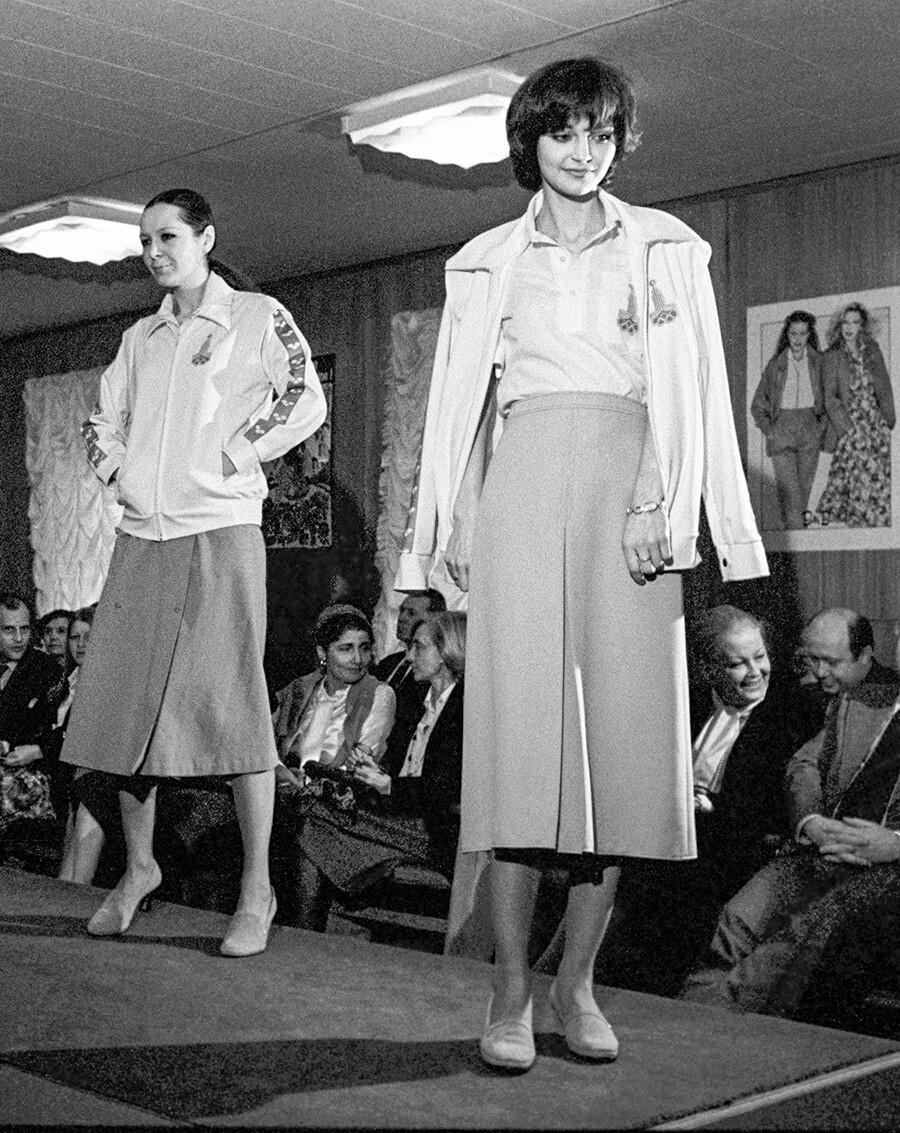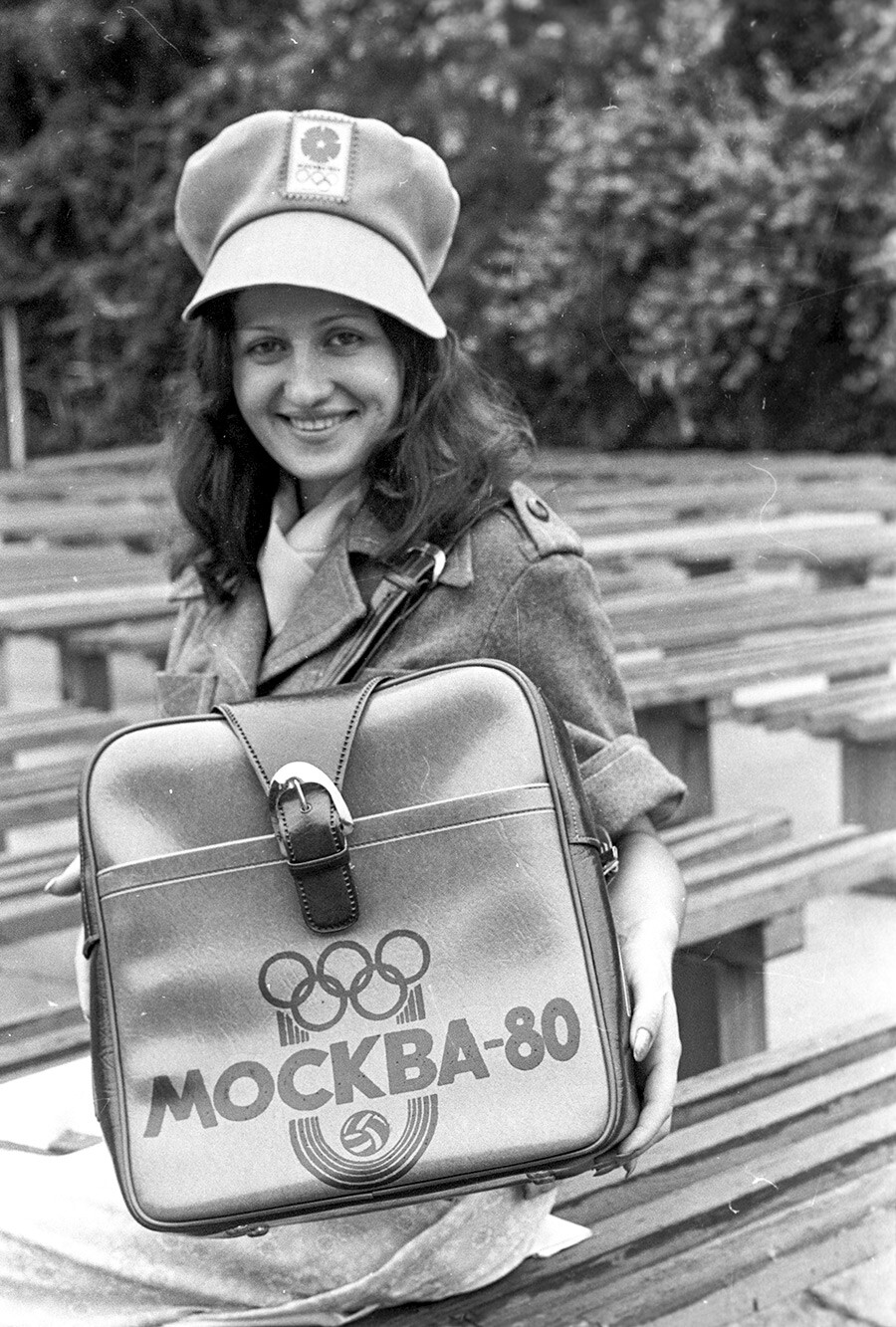
How did the 1980 Summer Olympics change Soviet fashion? (PHOTOS)

A look abroad
Although most Soviets were not free to travel abroad, world fashion trends were well known. Especially those that trended after massive international sporting events.
 Souvenirs of the 1980 Summer Olympic Games on sale in the Olympic Village.
Souvenirs of the 1980 Summer Olympic Games on sale in the Olympic Village.
Athletes lived in the Olympic Village in the southwest of Moscow. And, of course, for the duration of the Olympics, it was the main hangout. And, of course, the outfits of all the Western athletes were adopted.
 A dance party at the Olympic Village during the 1980 Summer Olympic Games in Moscow.
A dance party at the Olympic Village during the 1980 Summer Olympic Games in Moscow.
Fashionable Western clothes reached ordinary Soviet citizens via speculators. The latter exchanged jeans and jackets for black caviar and precious Soviet souvenirs made of natural stones and gems with tourists.
 Press photographers at work during the 1980 Summer Olympic Games held at the Izmaylovo Sports Complex.
Press photographers at work during the 1980 Summer Olympic Games held at the Izmaylovo Sports Complex.
Sporty style to the masses
The fashion for sneakers came to the USSR after the World Festival of Youth and Students in 1957. And, after the 1980 Olympics, for jeans with lapels, corduroy pants and safari-style shirts and dresses. These were the fashion trends that were raging abroad in 1980. But, the main change in fashion was a revision of the attitude towards the ‘sports style’, in general.
 Fashion collection, 1985.
Fashion collection, 1985.
Before the 1980 Olympics, tracksuits were only worn for sports. Leaving the house in sweatpants was not ‘comme il faut’. But, after it, the sports style became widespread in the USSR.
 Models demonstrate women's outfits with the Olympic Games symbols.
Models demonstrate women's outfits with the Olympic Games symbols.
Outfits by Adidas
The 1980 Olympics gave its name to a jacket with front zipper. In the USSR, such a jacket with a stand-up collar became literally known as an ‘olimpika’ (derived from the word ‘Olympics’).
 The 22nd Summer Olympic Games. Rowing channel in Krylatskoe. Olympic champion in canoeing Vladimir Parfinovich.
The 22nd Summer Olympic Games. Rowing channel in Krylatskoe. Olympic champion in canoeing Vladimir Parfinovich.
Previously, the Olympic uniforms had been designed by the fashion designers at the All-Union House of Models, but, for the Moscow Olympics, they were ordered from German company ‘Adidas’.
 Moscow. Organizing committee of the 1980 Olympics. The picture shows a uniform designed for staff of the Olympic Games.
Moscow. Organizing committee of the 1980 Olympics. The picture shows a uniform designed for staff of the Olympic Games.
However, without any brand labels. The delivery of sports equipment from abroad was threatened by sanctions against the USSR, but they managed to bypass them.
 Basketball match between the national teams of the USSR and Spain.
Basketball match between the national teams of the USSR and Spain.
Thanks to the Olympics, the Soviet Union launched the production of ‘Adidas’ sneakers under license.
 Armenian SSR. USSR. People trying on Adidas sneakers.
Armenian SSR. USSR. People trying on Adidas sneakers.
The assortment in the 1980s was very modest, but to have “foreign” shoes, albeit Soviet-made, was still considered very prestigious. For many years, it was this company that won the hearts of the Soviet youth.
Logomania
Besides, items with the 1980 Olympics symbols became trendy: T-shirts, bags, even carpets.
 Rugs bearing the emblem of the Moscow 1980 Summer Olympic Games made at the Derbent carpet weaving factory.
Rugs bearing the emblem of the Moscow 1980 Summer Olympic Games made at the Derbent carpet weaving factory.
Olympic volunteers had very recognizable windbreakers made of light fabric with ‘Mishka’, the Olympic bear mascot.
 The Olympic Village in Moscow. Cycling tourists from England.
The Olympic Village in Moscow. Cycling tourists from England.
They were featured on TV and in newspapers and also contributed to the development of fashion.
 Bag and cap with symbols of the Olympics-80.
Bag and cap with symbols of the Olympics-80.
The original windbreakers, by the way, turned out to be very durable. People wore them even after the collapse of the USSR.
 Fans cheer on swimmers during the 1980 Summer Olympic Games held at the Olympiysky Sports Complex.
Fans cheer on swimmers during the 1980 Summer Olympic Games held at the Olympiysky Sports Complex.













